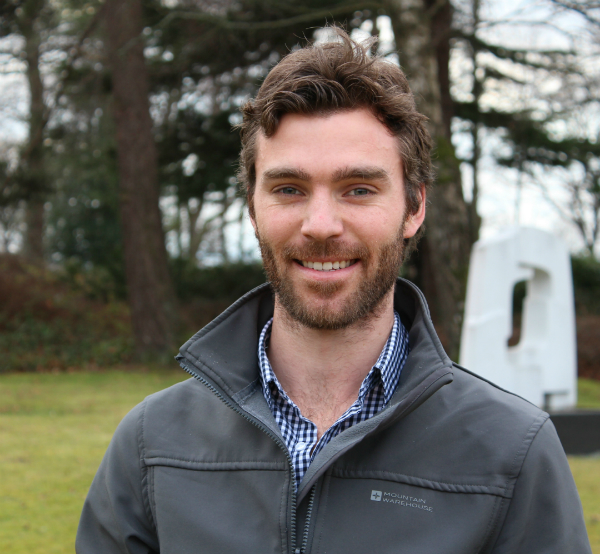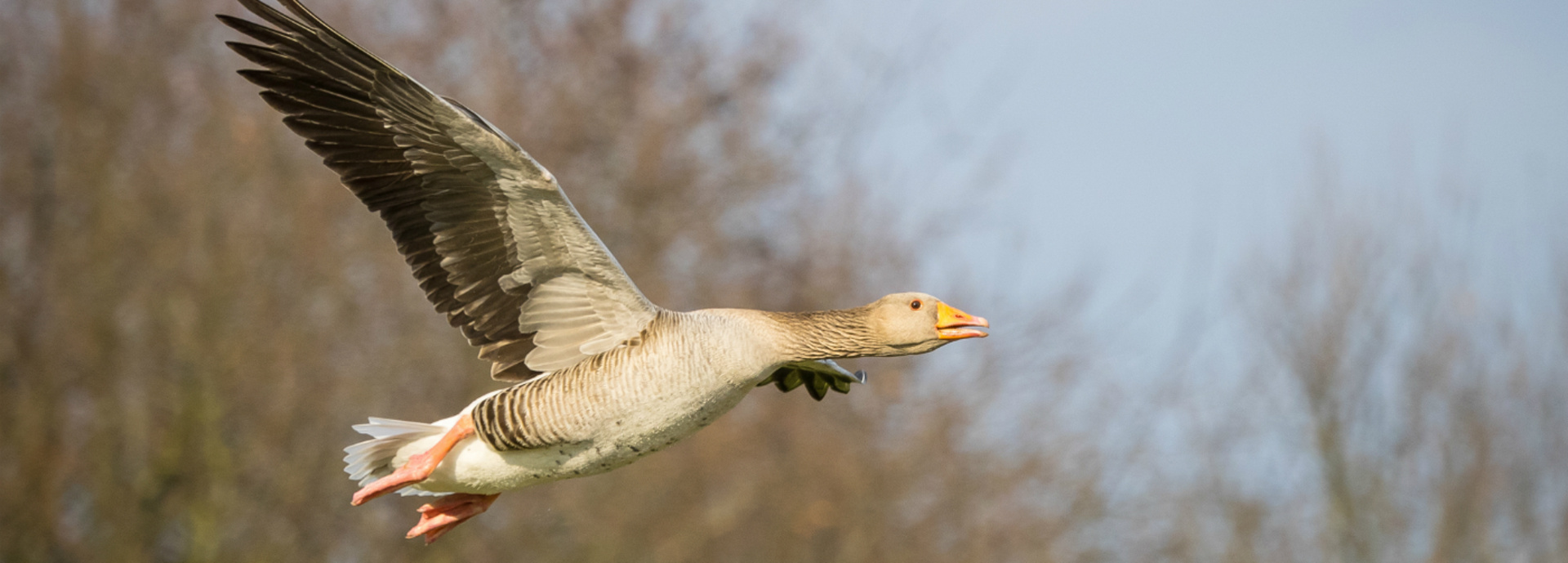Research could improve management of conflict between wildlife and farmers across the globe
Back to news
A new study led by the University of Stirling highlights improvements in the way conflicts between wildlife conservation and farming are managed worldwide.
Experts believe their analysis of conflicts involving large grazing birds – such as geese and cranes – across Europe could have a positive impact across the globe.
The team – led by Dr Jeremy Cusack, a Postdoctoral Research Assistant in the Faculty of Natural Sciences – studied how governments from Scotland, Norway, Sweden and Denmark were tackling increased damage and financial losses caused by a rising number of large grazing birds landing and feeding on their land. For example, in some cases, population numbers are controlled through culling and, in others, compensation is paid for damage to crops.

Dr Jeremy Cusack led the research.
The research focussed on nine different schemes, involving geese and cranes, and found disparities in the approaches employed. In many cases, approaches were not adapted to changes in bird numbers and to the level of damage being caused. In other situations, management actions were delayed, the study published in Conservation Letters revealed.
Dr Cusack said: “The study shows that, in many cases, management actions to reduce these conflicts – such as controlling a population or paying out compensation for damage – are not adapted to changes in the conflict population or the damage level, and are sometimes even delayed.
“This is likely to worsen conflicts, either by failing to address the impacts of wildlife on human activities, or by negatively affecting the survival of wild populations.”
He added: “Our research has the potential to improve the way we manage conflicts between wildlife conservation and agricultural activities – not just involving large grazing bird species – but perhaps lions which prey on livestock in rural Africa, or hen harriers feeding on economically valuable grouse in the UK.”
Damage
In recent decades, there has been a rapid increase in the number of large grazing birds – such as geese and cranes – across Europe. Many of these species have benefited from European Union legislation preventing them from being hunted in their wintering and breeding sites, as well as improvements in agricultural land quality, giving them access to better forage along their migration routes.
However, more birds landing and feeding in agricultural landscapes has resulted in more damage and financial losses to farming communities. This has led to widespread conflicts between those who want to protect large grazing birds and those invested in farming.
On the Scottish island of Islay, for example, the cost of conflict between farmers and good conservation is in excess of £1 million a year.
In an attempt to reduce these conflicts, management schemes that aim to decrease the costs of agricultural damage have been developed in many European countries. Common strategies include population control through culling, allocating monetary payments as compensation for damage, or implementing scaring protocols to dissuade birds from using fields.
The Stirling research assessed whether changes in the level of effort put into different management strategies matched changes in the size of the bird populations over time.
Across the four countries studied, the team assessed data from six case studies, involving nine different management approaches, five species of goose and one species of crane.
In some cases, management levels showed high synchrony with bird numbers. For example, in the northern Norwegian district of Vesterålen, the level of subsidy farmers received to cover the cost of setting aside land for pink-footed geese increased and decreased with the number of birds.
Similarly, the number of pink-footed geese shot during the winter in north-western Denmark was positively related to the estimate population size.
However, other cases highlighted an asynchrony – meaning management efforts and bird numbers moved in opposite directions over time. This pattern is to be expected if the aim is to reduce the size of a population by increasing the level of hunting, the experts explained. Examples of this include the management of Greenland barnacle geese on Islay and greylag geese in Orkney.
There were also cases where the relationship between management efforts and bird numbers was described as “random”.
Timely and adaptive response
Dr Cusack said: “This can influence the level of trust parties in the conflict place on the decision-making process and affect their overall responsiveness to policy change. We found this to be the case in six out of the nine comparisons of population versus management undertaken.”
The team also found changes in some management actions appeared delayed, with reference to changes in the numbers of birds counted.
“Although some delay can be expected, for example, if the data collected one year is used to inform management the following year, we use this study to caution against management decisions lagging too far behind monitoring of the natural system,” Dr Cusack continued. “Indeed, this could lead to management actions that are not suited to the current conditions, thereby exacerbating the conflict.”
He added: “In order to avoid these outcomes, our study suggests that monitoring and decision-making should go hand-in-hand with management actions responding in a timely and adaptive fashion to changes in the conflict environment.
“This will require more investment in regular monitoring and decision-making tools to translate monitoring results into decisions, but also more willingness from governments to support management schemes in an increasingly unpredictable world.”
Professor Nils Bunnefeld, Dr Brad Duthie, Dr Sarobidy Rakotonarivo and Dr Rocío Pozo, all of the Faculty of Natural Sciences at Stirling, collaborated on the study. It also involved: Durham University, the University of Agricultural Sciences in Sweden, the Norwegian Institute for Nature Research, the Norwegian Institute for Cultural Heritage Research, Aarhus University, the University of Queensland, the Wildfowl and Wetlands Trust and the University of Aberdeen.
The research, Time series analysis reveals synchrony and asynchrony between conflict management effort and increasing large grazing bird populations in northern Europe, was funded by the European Research Council’s Horizon 2020 programme and is published in Conservation Letters.
Background information
Media enquiries to Greg Christison, Communications Officer, on 01786 466 687 or greg.christison@stir.ac.uk

